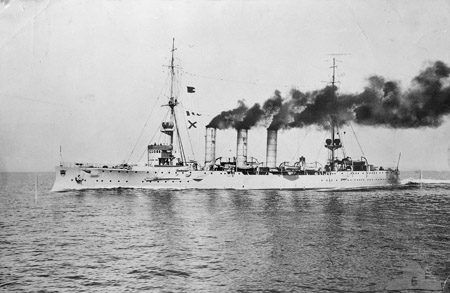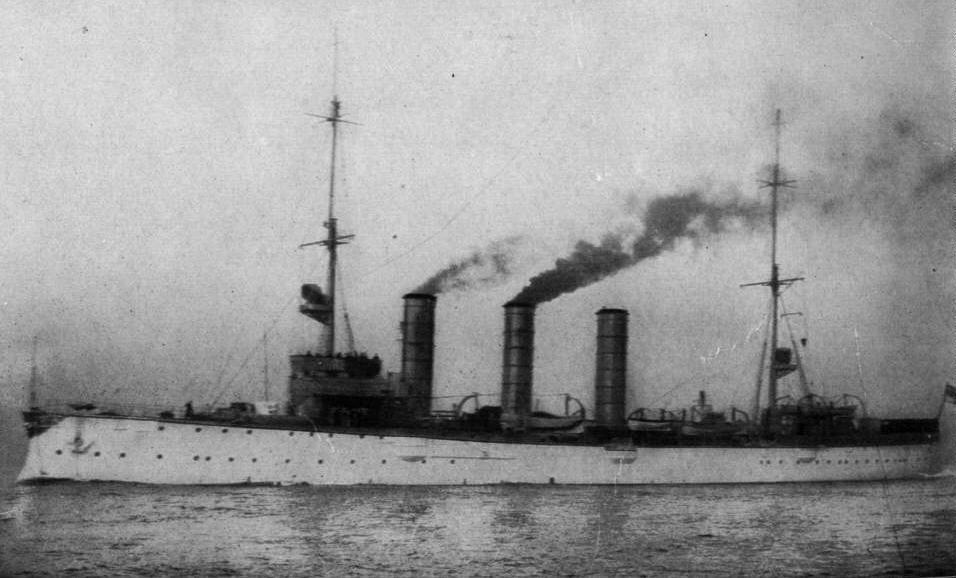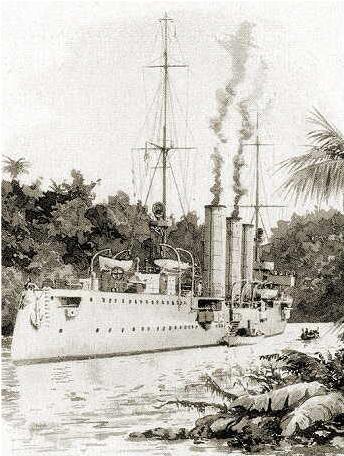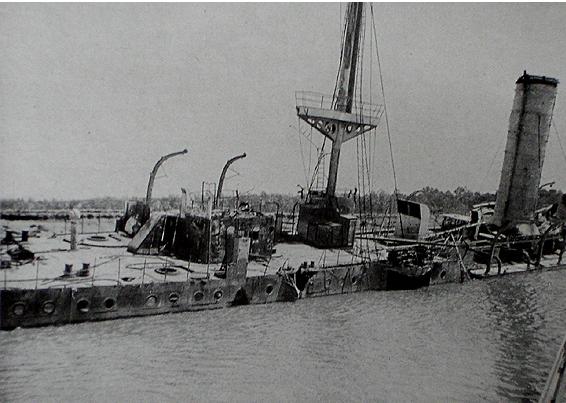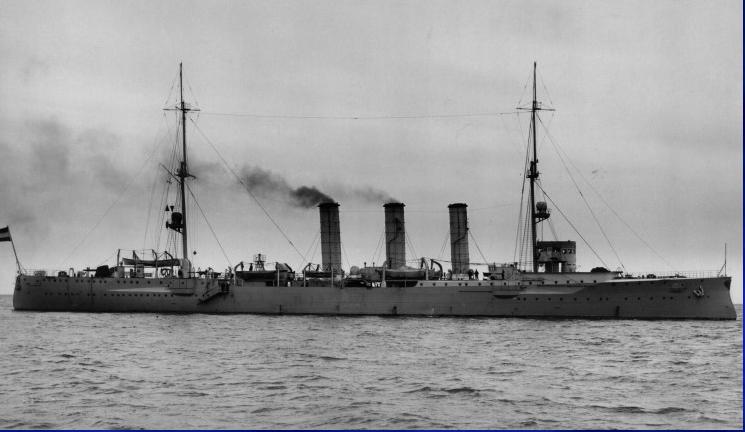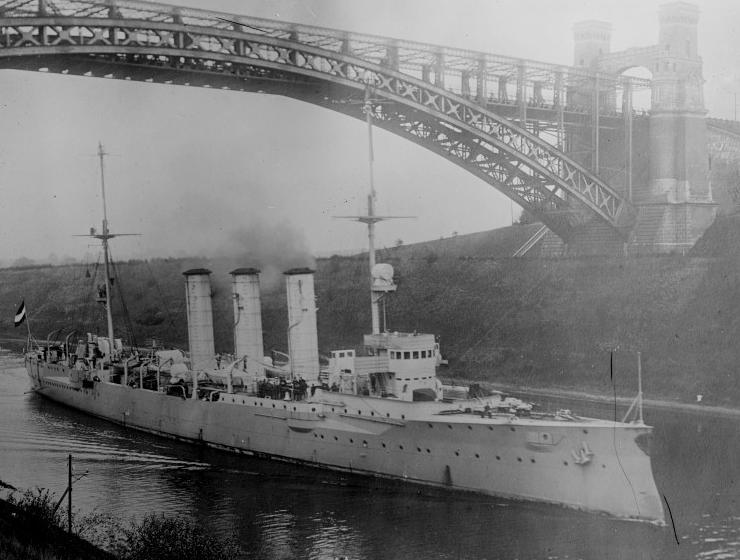Back in July I had a moment; a poem I struggled with and frankly dismissed decades ago hit me in the back of the head - hard.
I was mad at myself that back when Reagan was President I didn't take the opportunity to see past my immature brain to dig in to The Love Song of J. Alfred Prufrock by T.S. Eliot.
There was more there; a lot more - but I didn't know how to find it.
I then reached out to our resident English Professor at the front porch and friend, Professor Bruce E. Fleming PhD, from the Department of English at the United States Naval Academy. I had no idea if Eliot was in his stable, but I knew that one way or another, I wanted his take on Eliot.
Little did I know, but he knew exactly where this guy in his late 40s was coming from. It appears, he's seen this movie before.
Bruce did not disappoint. As I have typed this out, I have read his response three times - and each time I find something else to ponder.
If you don't like poetry or Eliot or whatever, I don't care. Suck it up and indulge me for a bit; take time and read what Bruce is offering here. As some of his former students might tell me, I picked the right Professor to ask for help.
Professor Fleming; the rest of the post is yours, and thanks again.
BT
I teach at the Naval Academy, Annapolis. I’m in my 28th year. My students are typically 18-21, with a few older ones who were prior-enlisted, or who went to civilian schools before losing all their time by starting anew at the Naval Academy. (We accept transfer of individual courses from these, but not of years: the idea is that four years of Annapolis are so essential to the development of an officer—the fact that 80% of Naval officers don’t go the Academy be damned—that we don’t want to deprive people of any of them.) Still, without a rare waiver, they can’t be older than 23 on the day they swear in, right hand upheld, on I-Day, Induction Day.
So they are young. And worse (or is this, better?), they come with illusions about the Naval Academy that are created by our Madison-Avenue-level hype: the Naval Academy is full of “the best and the brightest,” we reject twenty applicants for every one admitted, we make (as our Web site says) “Leaders to serve the nation.” They find out soon enough (I say by October of their plebe, freshman, year, so I call it their “October Surprise”) that none of this is true: we have SAT scores lower than the nearby state school University of Maryland, the bottom 20% of our class needed a taxpayer-supported 13th grade at the Naval Academy Prep School (NAPS) to even be viable academically and even then usually aren’t, we define an “applicant” to include high school students applying to a six-day summer seminar—about a third of the “applicants” we claim, we recruit shamelessly for Division I athletics, and we don’t graduate “leaders” (which we never define) but only officers, which we have the power to create. The students expect what I call “jacked geniuses” and find mediocrity, and a million rules and “traditions” that serve no purpose except themselves. So it’s all intensely discouraging for the midshipmen.
You’d think that this discouragement, which is the dominant tone in T.S. Eliot’s epoch-defining post-World War I poem (1920) “The Love Song of J. Alfred Prufrock,” would make this poem easy teaching at Annapolis. In fact, that’s what makes it hard going, as the students are almost all fighting against admitting their own disappointment: sensing it makes them twice as adamant about the dream that was denied them.
In November 2014, we’re marking the centenary of the beginning of World War I, then called the “Great War,” started by the “Doomsday Machine” (as some commentators have called it) of Great Power alliances. An astonishing number of them, whether friend or foe, were ruled by Queen Victoria’s grandchildren, so this marked the end of the Victorian era in a great killing machine that kicked in when the heir to the Austrian throne was shot by a single independence-minded Serbian.
The November show of a sea of blood-red ceramic poppies in the moat of the Tower of London shows how many English and Commonwealth soldiers died: one poppy (as in the poem, “In Flanders Fields the poppies blow/beneath the crosses, row on row”) per English or Commonwealth man. And not to speak of the Germans, who joined for what their leaders sold to them as “defending the Fatherland.” I read the German-perspective view of the killing fields second semester with plebes, Erich Maria Remarque’s “All Quiet on the Western Front.” Same young men on both sides, same pointless death. The poppies at the Tower of London constitute an astonishing display of public art, one that actually means something (as opposed to the antics of Cristo and Jean-Claude, who wrap public things—the Reichstag in Berlin, the Pont Neuf in Paris—in acres of expensive cloth and binding—to what end?). Do our students realize that wars that begin with patriotic valor (one of the most famous of English recruiting posters shows a woman pointing the way to hesitant recruits: Women of Britain say “go!”) can end in bloody pointlessness that wipes out the young men of a generation?
That’s a lesson you’d think we’d want to teach at a military academy, and thus you’d be justified in arguing that that “Prufrock,” which many commentators hold to be a response to the Great War, would be essential reading. However I confess that I gave up on “Prufrock” for the midshipmen years ago. Call me pusillanimous. Or weak. Just like Prufrock himself, the title character of the poem, who worries what the point of being able to “squeeze the universe into a ball” might be, if the lady he’s interested in dismisses him with a weary “that is not what I meant, at all”? He worries a lot, our Prufrock. That his hair, legs, and calves are getting thin. That the “eternal Footman” (‘Footman’ capitalized: God? Social convention?) will snicker (make fun of him behind his back). That he does not “dare to eat a peach.” Or indeed dare to do much of anything: “’Do I dare?’ and ‘Do I dare?’” He gets through life, measuring it out “in coffee spoons”—presumably one predictable and boring social engagement after the other, where he seems to think better of it before deciding to “turn back descend the stair”—and notes the predictable small-talk of his social class: “In the rooms the women come and go/Talking of Michelangelo”—but presumably without saying much that’s meaningful. All it does is pass the time before death.
All is predictable in Prufrock’s world, and all utterly pointless. And at the end, Prufrock (about whom we know little other than his strangely precise moniker—what is his first name?, and the fact that he moves in high, if dreary, society) knows that “the mermaids” (presumably the free beings of myth as opposed to his so-circumscribed life among the coffee-drinkers) “will not sing” to him. There is no escape. Just put one foot in front of the other, knowing his hair is growing thin, and that he no longer dares—to do anything, it seems. Not even to “eat a peach.”
Nor does anybody in lower societal strata with whom he has cursory contact have it any better: Prufrock walks at dusk through the city,
“When the evening is spread out against the sky/
Like a patient etherized upon a table”
and sees sad people leaning on the windowsills of rented rooms or cheap hotels, or restaurants with sawdust on the floor. The narrator calls himself “I” and addresses a “you”—presumably another person, or the reader? In any case the reader follows Prufrock through the low-rent district to the higher, where he passes his pointless social evenings. We’re not to ask about the lower classes, who never speak, though the fog and the smoke curl around the shabby buildings in which they live: we are on a mission, to “make a visit” and so we do not ask “what is it” (the absolute rhymes of this so-jazzy poem that otherwise meanders around a central theme bring us back to earth). Our choices seem to be sad and seedy on one hand or pretentious/hollow/boring on the other, which is a pretty discouraging choice. Still, it’s a “love song”—of formless longing for the sadness of it all, most likely, though countless freshman essays have been written “explaining” this strange title.
All this defeat and discouragement may be the metaphor of a post-War generation, and historically relevant, especially at Annapolis: it’s sort of how Vietnam went from keeping Communism at bay to writers like
Tim O’Brien or movies like “
The Deer Hunter” or “
Platoon.” But try selling this discouraging, if intensely relevant, bill of goods to testosterone- or estrogen-crazed young people still chasing the dream of being a Navy/Marine Corps pilot, or (the highest goal) a SEAL. We got Bin Laden, after all.
For a time, several years in fact, I did try, and like Prufrock, gave up. It was too much of a slog. I love a challenge, nothing gets me fired up faster than daring the impossible. But this was just cruel, telling kids with the bloom of ignorant youth still fresh on their cheeks the sad fact that, for many generations, including probably their own, it all ends badly. Think of Iraq. Individual heroes, overall (arguably) pointlessness.
No, what midshipmen want is
YUT. They want to be assured that the goal still exists, and is worth pursuing. And they want to be, and be around, winners. Prufrock is, let’s face it, a loser. He is educated and aware, but not, as we say at Annapolis, a stud. He whines, he admits defeat, he fails to go to the gym (people note “how his calves are growing thin”—not to mention his arms), he wastes his time in small talk measured out in coffee spoons and with too many women “talking of Michelangelo.”
Generations of prematurely old college students have found an “objective correlative” (Eliot’s phrase) to their own malaise in this poem. But not many of them come to Annapolis. Ours are more idealistic. Oh, their dreams are shattered soon enough: most are in shreds come October. But they rarely admit this. Or the possibility that the dream doesn’t even exist at all? So how to peddle this vision of seductive doom to young people who still have not admitted to themselves that the pumped-up hyper-muscular world they thought they would find at Annapolis does not exist, that the mermaids are not going to sing to them? You’d think they’d see themselves in Prufrock—but they don’t. They see simply a man who isn’t a stud. So they’re not going to listen to him.
Of course what they ought to admit, in order to move on past their own despair, is that there are no mermaids at all. I tell them this, and point out that the moving on consists precisely of ceasing to listen for the mermaids they believed would surround them outside. Instead they have to listen to the voice of their inner mermaid, the one that gets them to the gym to work on their arms and calves, that teaches them to simply leave when those damn people begin yammering again with the same platitudes about whatever or whomever (can be Michelangelo, can be T.S.Eliot). Eliot’s poem never gets to this point, but I can.
But is this fair to Eliot? This poem was written by a man not yet 40 who had clearly plumbed the depths of discouragement. Scholars tell us the woman who finds him irrelevant echoes his first, rather crazy, wife. Comparative Literature types (like, I suppose, me, with degrees from U Chicago and Vanderbilt in comparative literature) link the flowing associations of the form to the French poet Jules Laforgue; my professor Donald Davie at Vanderbilt contrasted this with the more “rock-hewn” lyrics of contemporary Ezra Pound, underestimated in Prof. Davie’s view in favor of the (for him) inexplicably more likeable Eliot with his musical washes of theme. Sculpture (Pound) vs. music (Eliot), Prof. David taught. Sculpture was better.
Well, that’s too fine a point even for an English major at the Naval Academy, much less a sophomore Western Lit student, or a plebe. To me, Prufrock looks like what we all threaten to become, and so have to fight against: a man of little self-esteem, caught in a robotic pointless lifestyle, and carrying out (or not carrying out) apparently abortive relationships with the opposite sex. Me, I say: go to the gym, be confident about the things you’ve earned, and have lots of relationships with other people of the sex that seems right to you. It’s called being alive.
Prufrock, by contrast, is waiting to die: “I grow old… I grow old…/ I shall wear the bottoms of my trousers rolled.” Damn it man, I want to yell at this Prufrock: DO something! EAT THE GODDAM PEACH! And then go on to do other things! FIND ANOTHER WOMAN! STOP GOING TO SO MANY COCKTAIL PARTIES! PUT DOWN THE COFFEE CUP! Go sweat some! Bro out! Chase women (or whatever): just DO IT!
I write the word “Nike” (as in “Just Do It”) on plebe papers that take too long to get to their point or make excuses for what they are peddling. So I say to Prufrock: NIKE!!!!!! He’s a how-not-to for our students, and that alone ought to make dealing with him useful to them. And his situation is arguably not one of his making. But in fact, midshipmen, in my experience, fail to see the “There but for the Grace of God” aspect to our hero. They just see somebody who’s despicable. They’re not wrong: he is despicable. But apparently he didn’t want to get where he is, and sees no escape. And sometimes there is no escape. How much of his situation is due to his having given up? And how much to his circumstances? Europe didn’t want to end up with a generation wiped out or mangled, but there it was. So now what? Just smile and be happy? Wallow in grief? Unclear, but in any case well worth the discussion—a discussion I now never even try to have.
Still, we should have this discussion, if not with the young—since something like this situation comes to us all. Sometimes I get emails from students of a decade, or two, before: typically they’ve had their times as studs, which requires constant charging forward and minimal introspection, and now are listening for the mermaids. Usually the mermaids are silent. They did the Marine Corps in Iraq and Afghanistan (to what purpose, they confess to me, they don’t know), got out, either are married (and don’t quite know what to make of that) or aren’t (and don’t quite know what to make of that either). Or they’ve figured out they are gay and now what? Or aren’t but the opposite sex isn’t cooperating. Or they have in fact stayed in the Navy (which usually means they’re divorced), but are disillusioned. Still, they want to hang on to retirement. Their emails are wistful. It all seemed so clear back at Annapolis: the institution was a washout so the Fleet had to offer the solution. And then it doesn’t. Welcome to Prufrock’s world.
Can I explain all that to them when they are 21 and champing at the bit to leave us for greener pastures, pastures which most of them discover don’t exist? Sure, I do my best to make clear to them that the only mermaids are the ones inside each of us, not outside: be true to your goals, discover yourself and be that person.
Sometimes the kind of person they want to be, hard though it may be for outsiders to USNA to believe, who frequently judge me based on my writings to be a grouchy old man, is me: I am an improbably youthful 60, do one-armed pushups to “motivate” midshipmen, remember their sports and whether they’re making progress (or not so much) on the papers, share current events, kid with them, let the tall jacked ones try on my suit jackets, and (they tell me) give them something to look forward to in their day. They work for me, I am fond of them, I model what I take to be good leadership in an institution that offers very few examples. So, at any rate, they tell me. I model confidence, they tell me, which is the mature version of their cockiness.
Of course, not all my students want to be me: I had a female student a decade ago who decided later she was into girls. She told me, more recently, bringing her wife by to say “hi,” that I was so comfortable being myself that she decided she had to be herself. She did USMC, and now has a fabulous job. So she’s a success story too. Modeling confidence doesn’t mean making clones. But if I didn’t swagger, they wouldn’t even pay attention.
Prufrock skulks rather than swaggering; he isn’t a success story, and he knows it. So they find it hard to listen to him. I hope my students do not end up as Prufrocks. This is the poem of an old-at-heart (if not old) man: it’s what threatens to overtake us all. It’s seductively beautiful, and we have to resist giving in to it—as if it were not mermaids singing, but sirens. Stop your ears with wax, I’d say to the midshipmen if I were willing to give this poem a try again, and bind Ulysses to the mast so that, alone able to hear the irresistibly beautiful song of the sirens in Homer, he would be unable to steer the ship to the men’s doom. Prufrock has an easy life, full of empty luxury, but it’s unfulfilling: the upper crust is vacuous, and apparently the lower-crust just sad.
But midshipmen rarely even give the poem the credit of finding it beautiful, or seductive: it’s enough for them that Prufrock’s hair and calves are unimpressive. They don’t realize that this is the fate that threatens to overtake us all—which means, them too. They can’t imagine being 40—but 40 was decades ago for me. I have former students who are 50. There is life after youth, blind, disillusioned-but-fighting-against-it youth, such as the college-age students at a military academy. I try to tell them that. They may listen, but I doubt if they hear. And I’m not even sure I want them to.
We leaders, when we stand before a cavernous space full of young faces, “prepare a face to meet the faces that we meet”: leadership is largely theater. So this is another lesson “Prufrock” could teach them, if they could only hear it. I try to get this point across to them anyway, but it’s not what they want to hear. They believe that leadership is all charisma and force rather than the day to day attention to detail it largely consists of. And they believe that, unlike Prufrock, they do dare: the self-doubt of a Prufrock, reserved for the more mature beings they will become, is still in the future. So I can’t, as I so desperately want to do, even show them how to combat it. It’s a disease that, they believe, will never afflict them. They’re wrong, so sadly wrong. But some things cannot be transmitted to the young, no matter how desperately they need to hear them. Which is why I’ve stopped teaching T.S. Eliot’s masterwork “The Love Song of J. Alfred Prufrock” to midshipmen at Annapolis.
